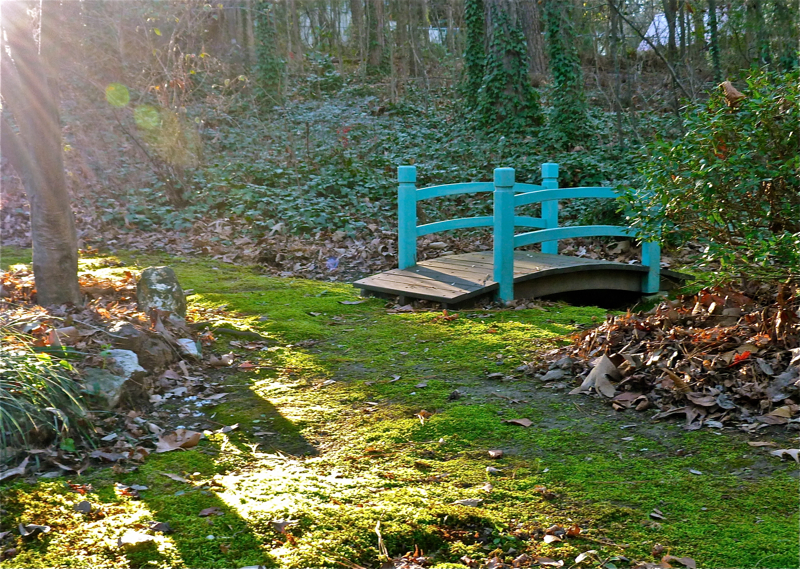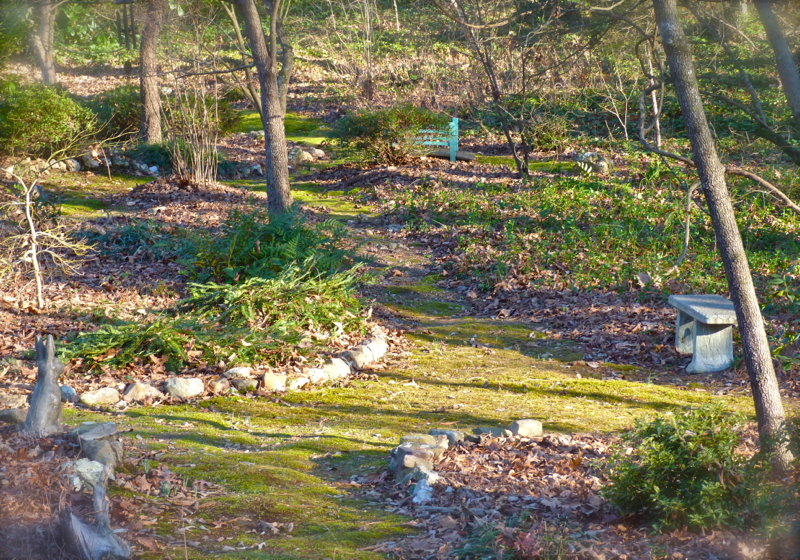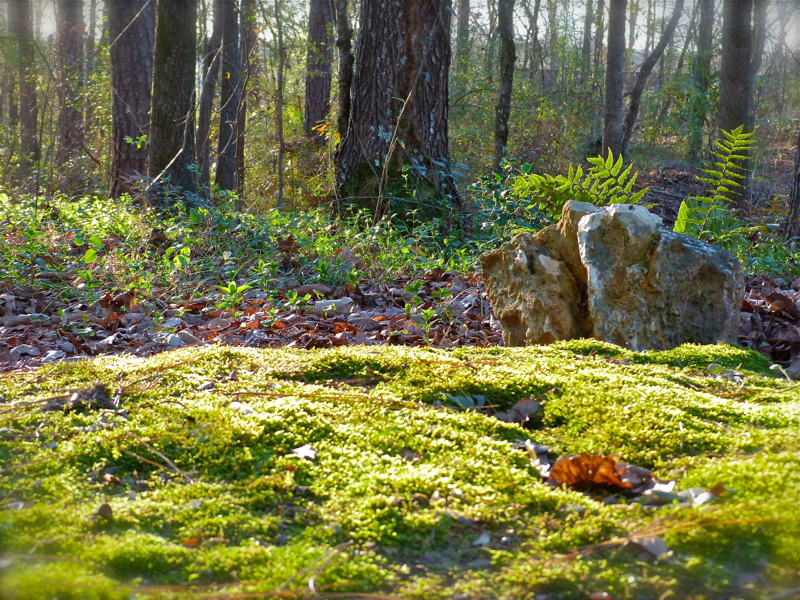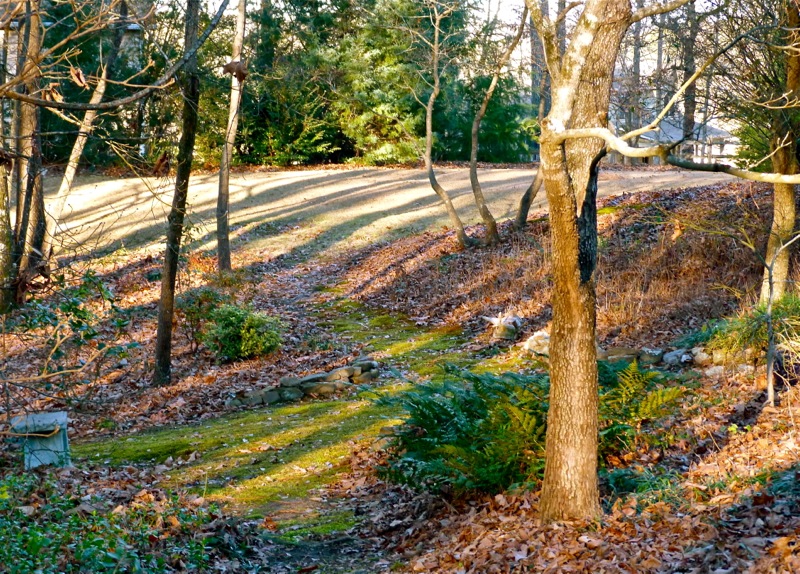I have been growing a moss path in my woodland garden for about five years, and winter may be the best time to appreciate its golden green glow.

Moss makes a wonderful, low maintenance path, and, yes, it is perfectly OK to walk on it, though high heels are not recommended! Jogging is not great, either, as this is likely to tear chunks of moss out of its place. But the foot automatically slows when it steps on the velvety surface of moss. Walking on a moss path transports one to a hushed and older realm, far from the stress and pace of modern life. It is best to savor the experience.



Moss has roots that anchor it to the surface, but these roots don't absorb water or minerals. Unlike more advanced plants, moss does not have a vascular system to transport water and nutrients. Instead, moss absorbs moisture directly from the air and uses sunlight to produce food through photosynthesis. If moss is covered up, it will not grow successfully. Because moss doesn't get its nutrients from the soil, it does well on poor, compacted soil and even solid surfaces such as stone or brick.
It will also grow on trees, but fortunately it is non-parasitic, since it does not steal nourishment from its host. Moss cannot store moisture and will dehydrate during prolonged dry periods. Nevertheless, many mosses spring back to life quickly once they are rehydrated. My moss path doesn't receive supplemental water but has easily survived several droughts.
Moss does not produce seeds or flowers. Spores are borne on long filaments in spring, but propagation by this method is difficult. The best way to get your moss path going is by adding plugs or sheets of moss wherever you want it to spread. Moss either grows in clumps or spreads horizontally, and the spreading type is best for paths. Local moss will be most suitable to your site. Just rough up the surface of the bare ground, put the moss on it, then firmly press or step on it to help it attach. Water it in, and your moss is ready to spread. Moss was already growing in a few places within my paths when I first got started, which is what gave me the idea to let it spread throughout. I found moss growing in other spots on my property and added plugs of it to the paths. I was thrilled when I found moss growing over the surface of a large flat rock. With the help of a trowel, pieces peeled off easily and made perfect transplants.


If you have the right conditions, allow some moss to grow in your garden. A path or even a moss lawn may be just what you need to lower your blood pressure or to restore your frazzled spirit. Don't have so much space? Then try a moss garden on a smaller scale. No room at all? Moss, along with a petite fern, miniature hosta, or a wildflower or two can make a delightful dish garden to sit in a window or on a patio.
Peace to you. Deborah